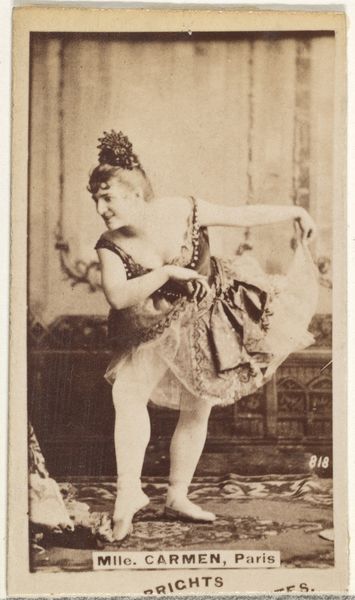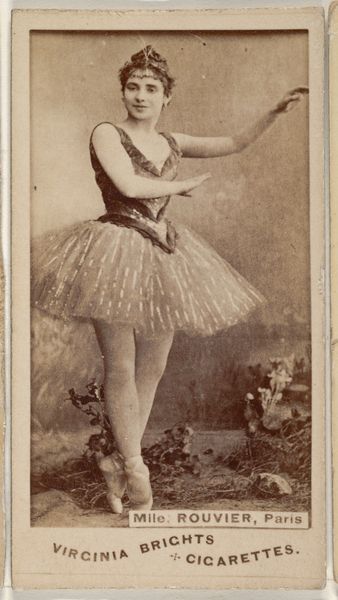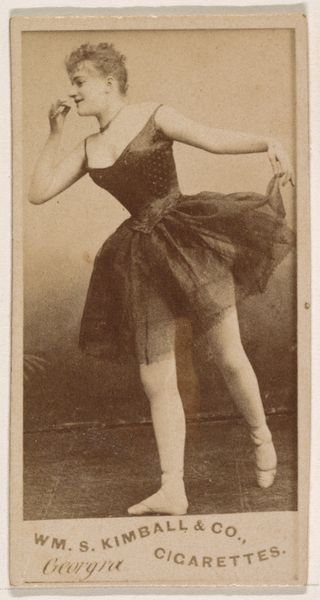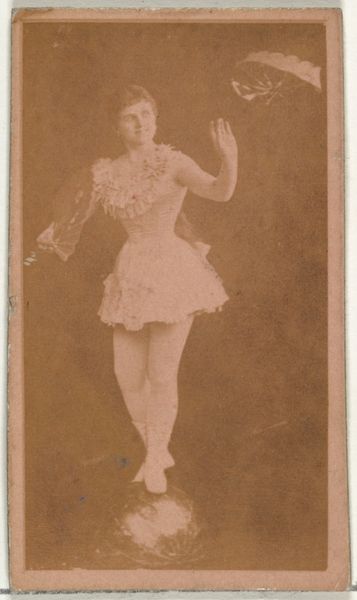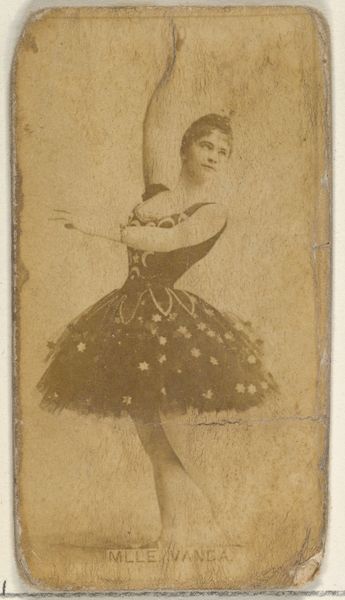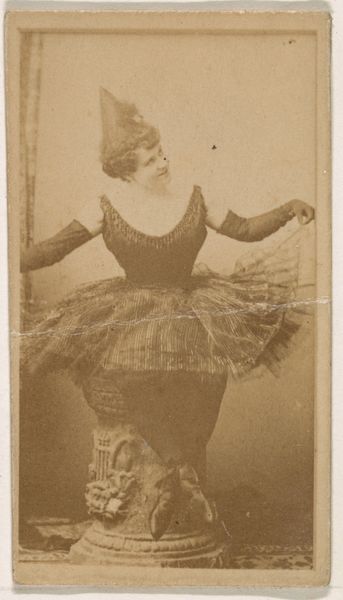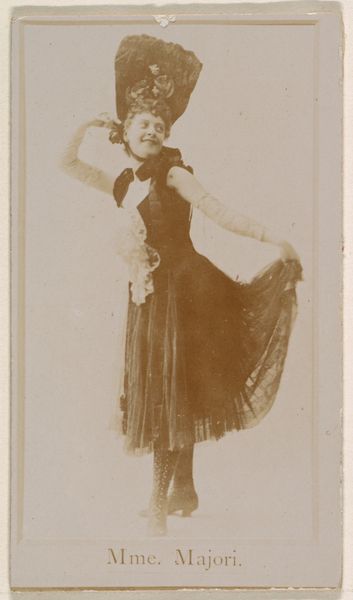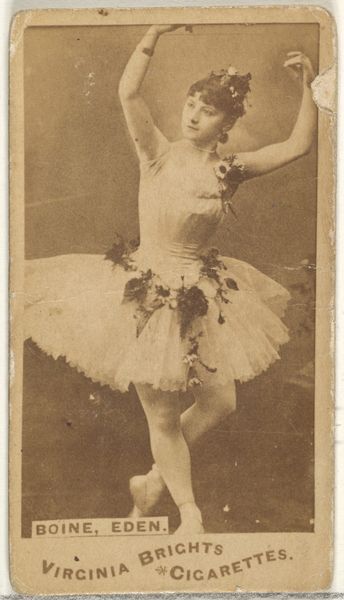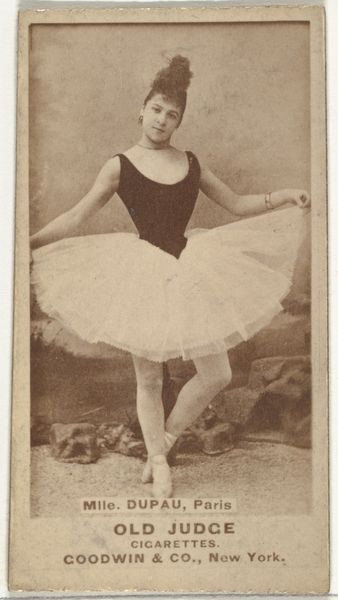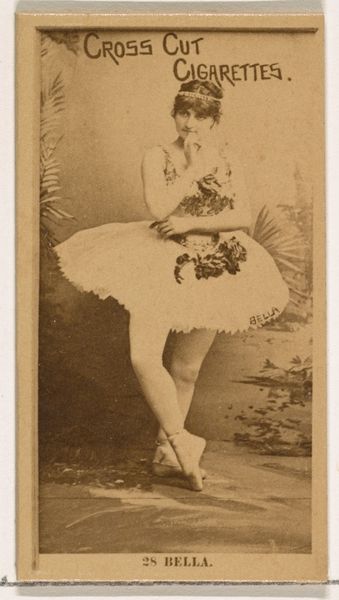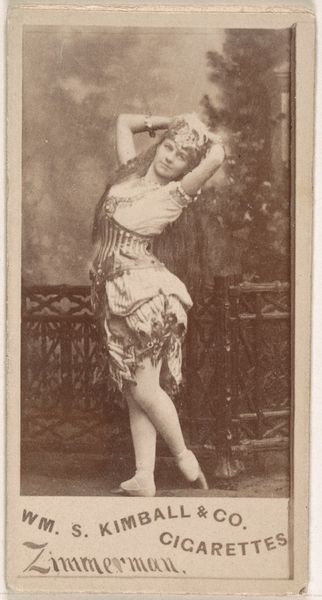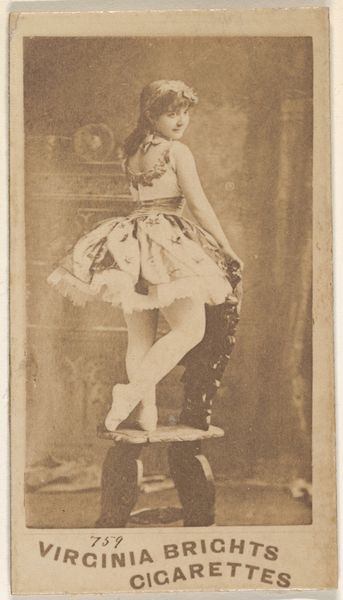
Mlle. Vanda, from the Actresses series (N245) issued by Kinney Brothers to promote Sweet Caporal Cigarettes 1890
0:00
0:00
drawing, print, photography
#
portrait
#
drawing
# print
#
photography
Dimensions: Sheet: 2 1/2 × 1 7/16 in. (6.4 × 3.7 cm)
Copyright: Public Domain
Curator: Here we see a photograph from 1890, "Mlle. Vanda, from the Actresses series," produced by Kinney Brothers to promote Sweet Caporal Cigarettes. The image itself is petite. What stands out to you initially? Editor: Well, it's definitely of its time – a tobacco card! I find the combination of high art – ballet – with something as mundane as cigarettes kind of amusing. What's interesting about the context of production? Curator: Exactly! We need to consider the economics here. Photography, as a printing process, allowed images like these to become affordable and reproducible on a mass scale, becoming commercial tools. These weren't seen as ‘high art’ initially, but as promotional items. Did the working class have more access to photography now? Editor: So it democratized art in a way, or at least images? Though it also strikes me that this democratization was deeply intertwined with capitalism and advertising. It’s kind of a strange thing to ponder now. Curator: Precisely. Look at the material itself – a small card meant to be collected and traded. The means of distribution – cigarettes – speaks volumes about consumer culture at the time. What do we learn from the materiality about beauty or prestige here? Editor: That beauty could be packaged and sold, I suppose, and that even high art was fair game in the growing advertising industry. It's a really interesting intersection. Thanks! Curator: My pleasure! Considering the economic drivers behind art production provides a necessary perspective. We both learned about this particular commercial product that existed between industries.
Comments
No comments
Be the first to comment and join the conversation on the ultimate creative platform.
